Frankfurt Motor Show 2011
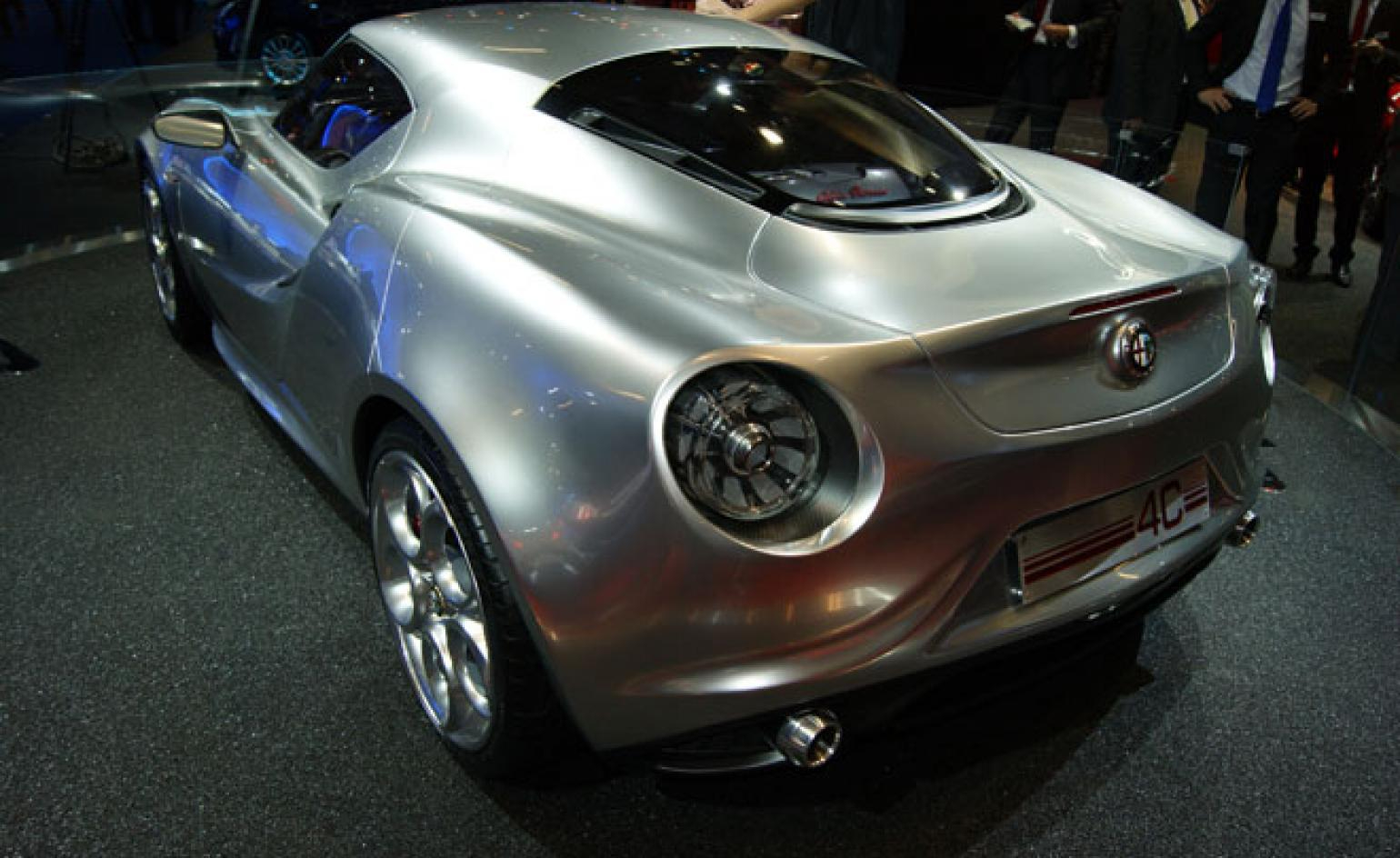
Alfa Romeo 4C concept
The Alfa Romeo 4C precedes a new small but powerful 200bhp range of Fiat Group sports cars expected from next year
www.alfaromeo.com
If the Frankfurt Motor Show 2011 is anything to go by, the automotive industry is in a state of conflict at the moment. Zero emission cars - the only way the industry can continue to grow without twinges of guilt - are certainly on the rise, and yet the hunger for high-performance luxury drives continues unabated.
As is traditionally the case in Frankfurt, German marques dominated the show, with BMW, Mercedes-Benz and Audi exhibiting a hugely contrasting collection of vehicles. On the one hand, they gave us wonderfully innovative mobility solutions for the megacities of the future; on the other, a host of ultra high horsepower performance cars. It's a delicate balancing act for these leading luxury carmakers.
On the BMW stage, for instance, sat the first offerings in its electric sub-brand, the i3 and i8, which Wallpaper.com reported on back in August. These two fantastically futuristic designs shared the stage with the new petroleum-powered M5 performance car. Over at the vast three-storey Mercedes-Benz hall, a fleet of Smart electric cars and a hydrogen-powered F125 concept were exhibited a stone's throw away from the powerful new SLK 55 AMG.
Audi also displayed conflicting behaviour, starting the weekend before the show with a group of academics, architects, urban planners and IT experts gathering to discuss the challenges facing the world when 70 per cent of the population will be living in dense urban settings. At this forum, the role of the car and its identity were questioned, given that the young generation appears to care more for smartphone apps than car ownership. It is an intriguing and ongoing debate that will lead to a second Audi-sponsored Urban Future Award in 2012.
The following day, in Audi's spectacular pavilion, the marque displayed a wild mix of cars that ranged from the neat A2 electric study, two brilliant electric Audi Urban Concept studies, and the dazzling electric e-tron concepts, together with the slinky, swift and unashamedly fossil-fuelled S7, S8 and Audi's other high-performance cars.
The stars of the Frankfurt show can essentially be divided into four groups: pragmatic everyday road cars, performance luxury drives, design concepts and ecological studies.
Wallpaper* Newsletter
Receive our daily digest of inspiration, escapism and design stories from around the world direct to your inbox.
Centre stage at the Volkswagen stand were the Up family of cars, VW's new Small Family range that will eventually include three and five-door hatchbacks, a mini MPV and a buggy concept, all powered by a choice of conventional and electric engines. The Ups are small, smart, affordable and global cars - and therefore highly relevant to our mobility concerns.
Honda, meanwhile, presented the fresh-faced Civic family car. The Japanese firm caused a stir back in 2006 when it first introduced the European Civic. It was a radical departure in terms of design with a futuristic, almost spaceship exterior and a more premium cabin than this market is used to. The 2011 Civic is a slightly more self-assured car, introducing elements of its Japanese heritage especially in some of the exterior detailing. Chief designer Daisuke Sawai described it as 'the harmony between man and machine', a familiar refrain from auto designers.
Mini introduced the production version of the Coupé, the latest variant of the BMW-owned marque. It couldn't have been easy evolving such an iconic design as the Mini hatchback into a two-seater, yet the design team lead by Anders Warming have been brave and at times brash - in this instance creating a small sports car with an innovative roof design. The new Mercedes B-Class is also worth noting in this area.
In the performance car category Porsche took centre stage with the newly designed 911. This is the marque's pinnacle car. It is what defines the brand, and revising its truly classic shape is no easy task. For the new 911, design director Michael Mauer has maintained the iconic silhouette but thanks to a few tweaks here and there - most notably in the length of the wheelbase - he has freshened up the design, bringing it more in line with Porsche's other models. Only truly dedicated car buffs will notice the difference, we suspect.
Naturally there were some notable Italian supercars. Ferrari didn't disappoint with the new 458 Spider convertible and Lamborghini showed the raciest version yet of its Gallardo. The British highlights in this area were the new
Bentley Continental GTC, Lotus Elise and Aston Martin's stunning V12 Zagato.
As is customary at motor shows, there were design concepts a-plenty. All eyes were on Jaguar for its long-awaited 'E-Type replacement', the C-X16 study. Any link between this neatly packaged sports car and the original, iconic E-Type is largely media-invented (although the hatch-back boot looks familiar). Jaguar is striving to move away from retro design and the C-X16 largely succeeds.
Maserati showed off its Pininfarina-styled luxury sports-utility Kubang, which it plans to start building in 2013 as a direct rival to the Porsche Cayenne. The Italian marque also announced plans to build a small saloon.
Ford's Frankfurt focus was the Evos, a rather flashy scissor-door design study in bold red that represents the second evolution in the marque's Kinetic language, as used on its current generation of cars. More importantly, the Evos was a showcase for Ford's next-generation interior technologies, with a heavy reliance on cloud connectivity for the data-hungry driver.
One of the main highlights, though, came from Citroën and its Tubik people carrier concept. This is a fresh take on the campervan and clearly inspired by current furniture and textile design, offering a flexible and modern living-room environment with high degrees of connectivity for larger families on the move.
In terms of ecological innovations the BMW i3 and i8 are incredibly interesting electric drive propositions that have been intelligently executed. The final production cars promise to stay close to these conceptual ideas when they hit the roads in 2013.
The two Audi Urban Concept studies are also inspired designs. The twin two-seaters - a coupé with a sliding roof and a Spyder convertible - combine elements of race car, roadster and city car rolled into one small electric vehicle. VW's Nils is a concept study along similar lines, a single seat three-wheel car for urban commutes. Even Vauxhall is getting in on the commuter car action with tits well-thought-out RAK e two-seater.
It was also refreshing to see the emergence of small, privately-owned new automotive company Eterniti, which is dedicated to making niche luxury cars. The British firm showed its first car at Frankfurt, a Porsche Cayenne-derived 'luxury SUV' called the Hemera. Production is planned for next year.
The individual exhibition architecture also spoke volumes about the various marques. Audi came out on top with a vast, multi-million euro pavilion that it built from scratch, rather than using space within the exhibition halls. The futuristic building housed a fully functioning racetrack, allowing visitors to experience Audi's expertise in performance, sustainability and connectivity with an actual test drive on site.
In contrast, Honda had a playful pavilion with a serious message. By manipulating flexible polyethylene tubes, Belgian designer Sebastien Wierinck created a series of colourful pipes connected to a single focal point - 'The Dream House', where Honda's ecological and technological visions come together under one roof.
Ultimately, however, it felt like two contrasting and conflicting realities were thrust up against one another - uncomfortably. Frankfurt 2011 was a surreal experience. Yes, there was plenty of clean urban mobility thinking on display, but ultimately it felt like a battle of European superpowers.
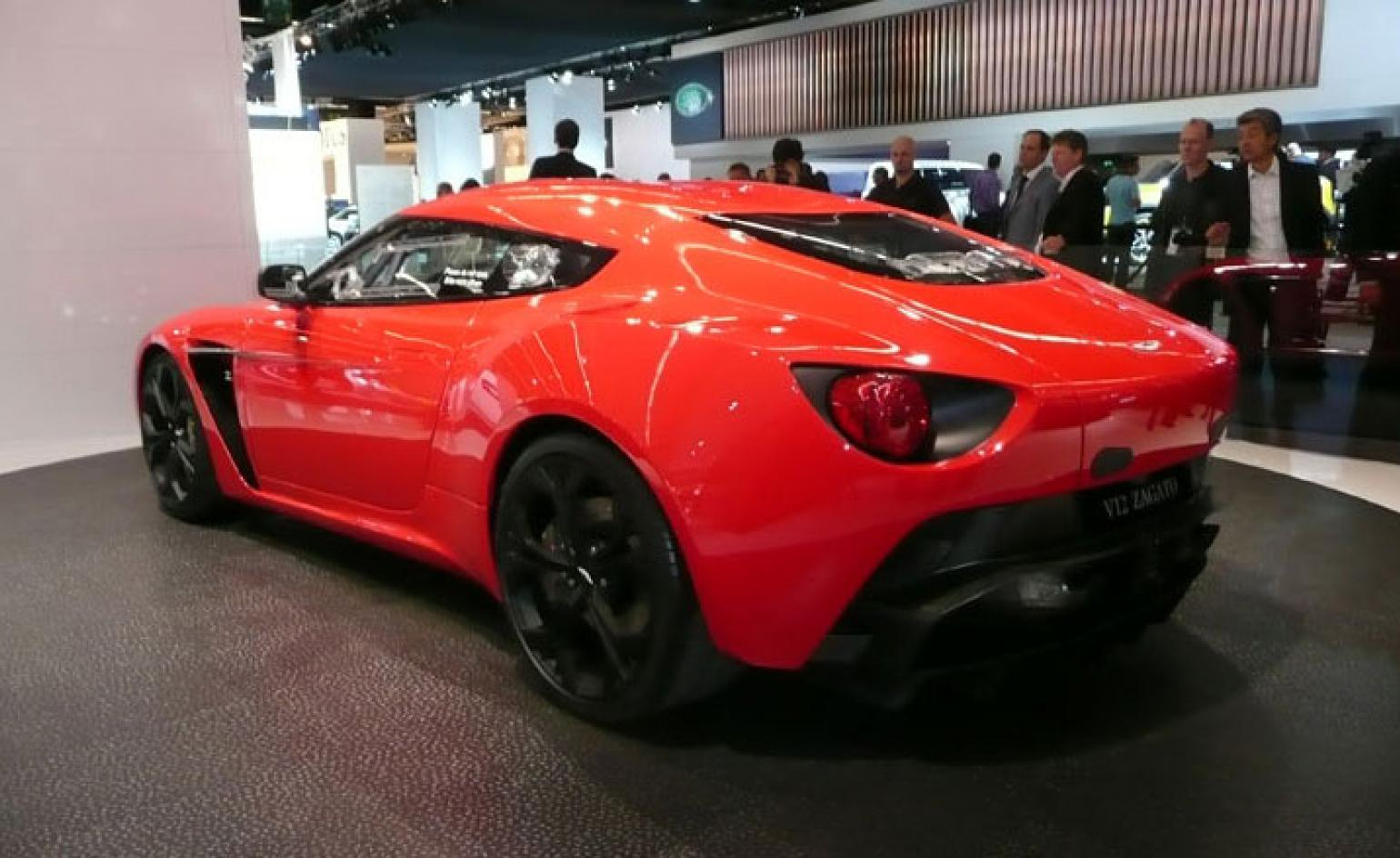
Aston Martin V12 Zagato
The hand-built Aston Martin Zagato is based on the V12 Vantage. The 6.0-litre engine produces 510bhp while the body is made of lightweight aluminium and carbon fibre

Audi A2 electric concept
Audi was truly ahead of its time in 1999 when it introduced the original A2 - a lightweight aluminium small city car. Sadly the car buying market hadn't quite caught on to ecological driving at the time and the car ceased production in 2005. Thankfully the German marque has decided to reinvent the A2 in the form of an electric concept car. At 3.8 m long and 1.69 m wide it is very compact, yet it can still seat four, thanks to the clever packaging of batteries under the floor and the front-drive electric motor
Production: 2014

Audi pavilion
Audi designed and built its very own building for this year's Frankfurt show. Created by pavilion design specialists Schmidhuber + Partner, and rumoured to have cost well over €10m, the 50,000 sq ft building features a working test track that wraps around the upper portion of the pavilion and can be glimpsed from the outside through red glass reminiscent of Audi's light design. 'Our idea was to have a building that wasn't just designed to display the cars, but to drive the cars,' says Bernhard Neumann, head of events marketing Audi. 'As a visitor you have the chance to drive with our experts, so guests become part of the installation.'

Audi Urban Concepts Coupé and Spyder
Audi's design studio have developed two Urban Concept studies and the reaction they get to them, following Frankfurt, will determine their future. The plug-in electric, two-seater concepts come in two forms - a coupé and open-top Spyder. They feature carbon fibre monocoque; the interior uses aluminium and carbonfibre trim, features a square steering wheel and adjustable foot pedals. Pictured here is the Audi Urban Concepts Coupé

Audi Urban Concept Spyder

Bentley Continental GTC
This is the second-generation Bentley Continental GTC - the convertible version of the very successful Continental luxury car. Much like its Coupé sibling, the soft top inherits the newly designed LED headlamps and the upright grille. The GTC features a multi-layered fabric roof with special acoustic glass to reduce cabin noise Price: around £150,000 Delivery: late 2011

BMW i3 electric concept
The i3 and i8 are the first of a series of sustainable mobility solutions to be produced by BMW under its sub-brand 'i'. Previously termed the Megacity Vehicle, this is an all-electric compact city car with a strong aesthetic that expresses e-mobility yet retains a visual link with BMW. Beneath the skin lies the 'LifeDrive' architecture that is at the core of all 'i' cars. In simple terms it means all the elements connected with running the car - the suspension, lithium-ion batteries and drive systems - sit low in the aluminium Drive part while the passenger Life cell, constructed from lightweight and high-strength carbon fibre-reinforced plastic, is mounted on top. The i3 is a mere 3845mm long, 1537mm tall and 2011mm wide yet feels spacious inside. 'It has a small surface, but the modular architecture means the engine and so on fit underneath, creating a relatively large passenger cell,' explains design director Adrian van Hooydonk. The i3 has a 170bhp electric motor powering the rear wheels and a range of between 80 and 100 miles on a full battery, which takes six hours to charge Delivery: 2013

BMW i8 electric concept
Alongside the i3, the i8 is the first of a series of sustainable mobility solutions to be produced by BMW under its sub-brand 'i'. Based on the 2009 Vision EfficientDynamics design study, the i8 is BMW's proposal for an electric super sports car. The design was 'aero focus', notes design director Adrian van Hooydonk, meaning the aesthetic echoes its extreme aerodynamic efficiency. The silhouette is elongated and the look is BMW's take on the sports car for the future. 'We've taken care that it doesn't look as aggressive as a normal super sports car,' says the designer. There are modern elements - like the 'streamflow' C-pillar, which air flows through to improve aerodynamics. It also features large 19-inch, slim wheels with AirCurtains to help airflow around the wheel arches. The i8 has 2+2 seating and uses a three-cylinder 220 bhp engine linked to a version of the i3's electric drive. It is due for production in 2014 alongside the i3 at the Zaha Hadid-designed BMW factory in Leipzig Production: 2014

Bugatti Veyron L'Or Blanc
The modified Bugatti Veyron Grand Sport L'Or Blanc features swirled paint and porcelain trim

Citroën DS5
First shown at the Shanghai Motor Show earlier this year, this is the final production version of the car. The five-door hatchback is the third model in Citroën's premium DS line, following on from the DS3 and the recently launched DS4 Price: around £25,000 Delivery: Spring 2012
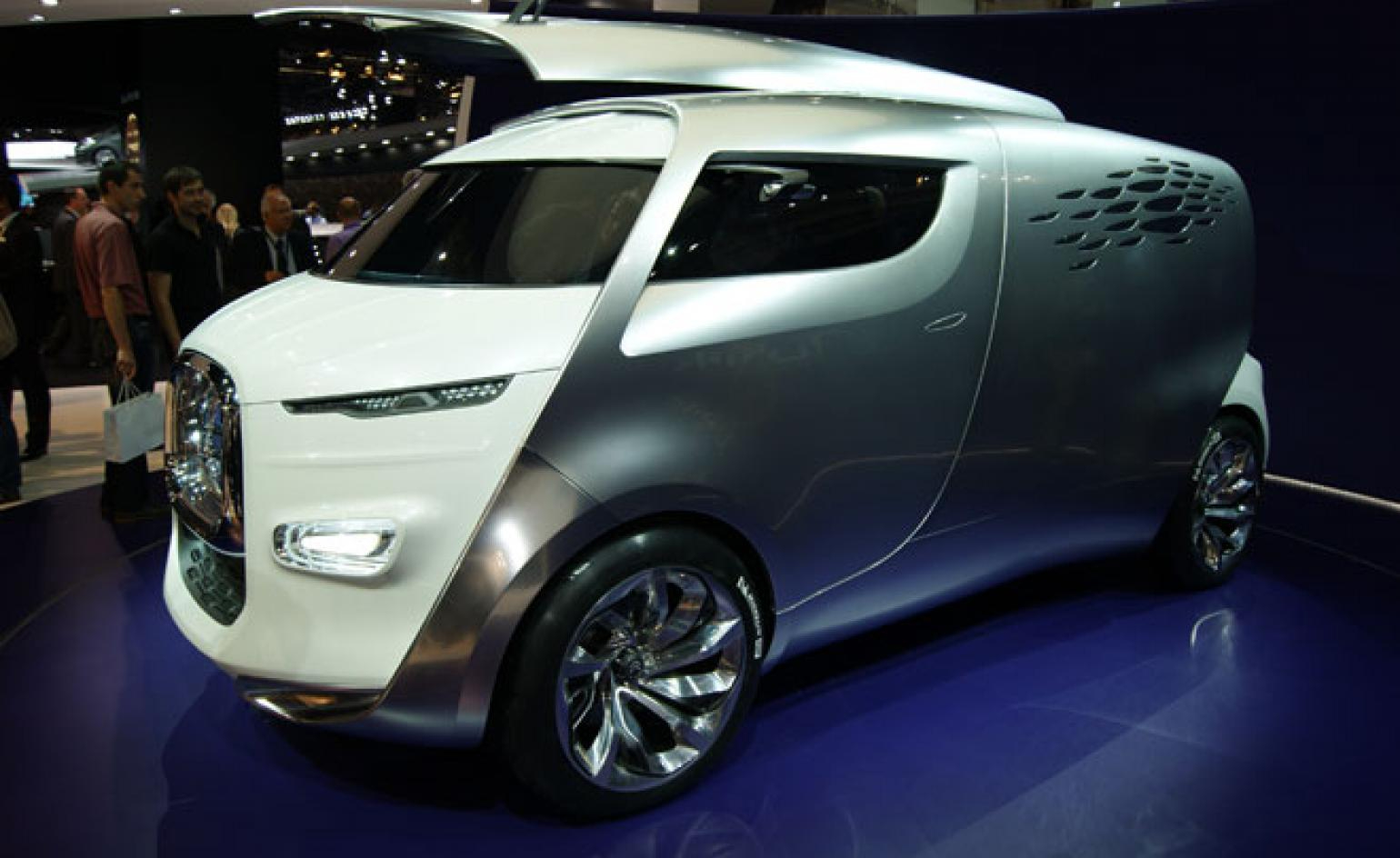
Citroën Tubik
The Citroën Tubik concept is a charming proposition for a family people carrier, a sort of premium shuttle that is stylish, luxurious and focused on connectivity. The monobox form houses a flexible interior that is intended to be an extension of the modern home, replete with all modern gadgets. 'Cars are downsizing for a reason but you also need vehicles that provide this kind of space,' says head of concept cars Carlo Bonzanigo. The hybrid technology has allowed the design team to create such a large space with similar emission levels to a normal saloon. 'The micro idea behind it is to reinvent the long distance trip,' says the designer. 'The metallic cocoon is such that the pilot and the passengers have two different universes. The passengers have a lot of technology and entertainment and the driver also has technology at his disposal condensed into a sort of Playstation package.'

Eterniti Hemera
The Hemera is the first car to be introduced by the new British car company Eterniti. With ex-F1 pilot Johnny Herbert and ex-Jaguar engineer Alastair Macqueen in charge of development, this luxury sports-utility concept is powered by a 4.8-litre twin-turbocharged V8 engine that produces 620 hp. The car boasts heated and cooled reclining rear seats, a pair of iPads with wireless keyboards and a drinks cooler Price: around £150,000 Delivery: 2012 in limited numbers
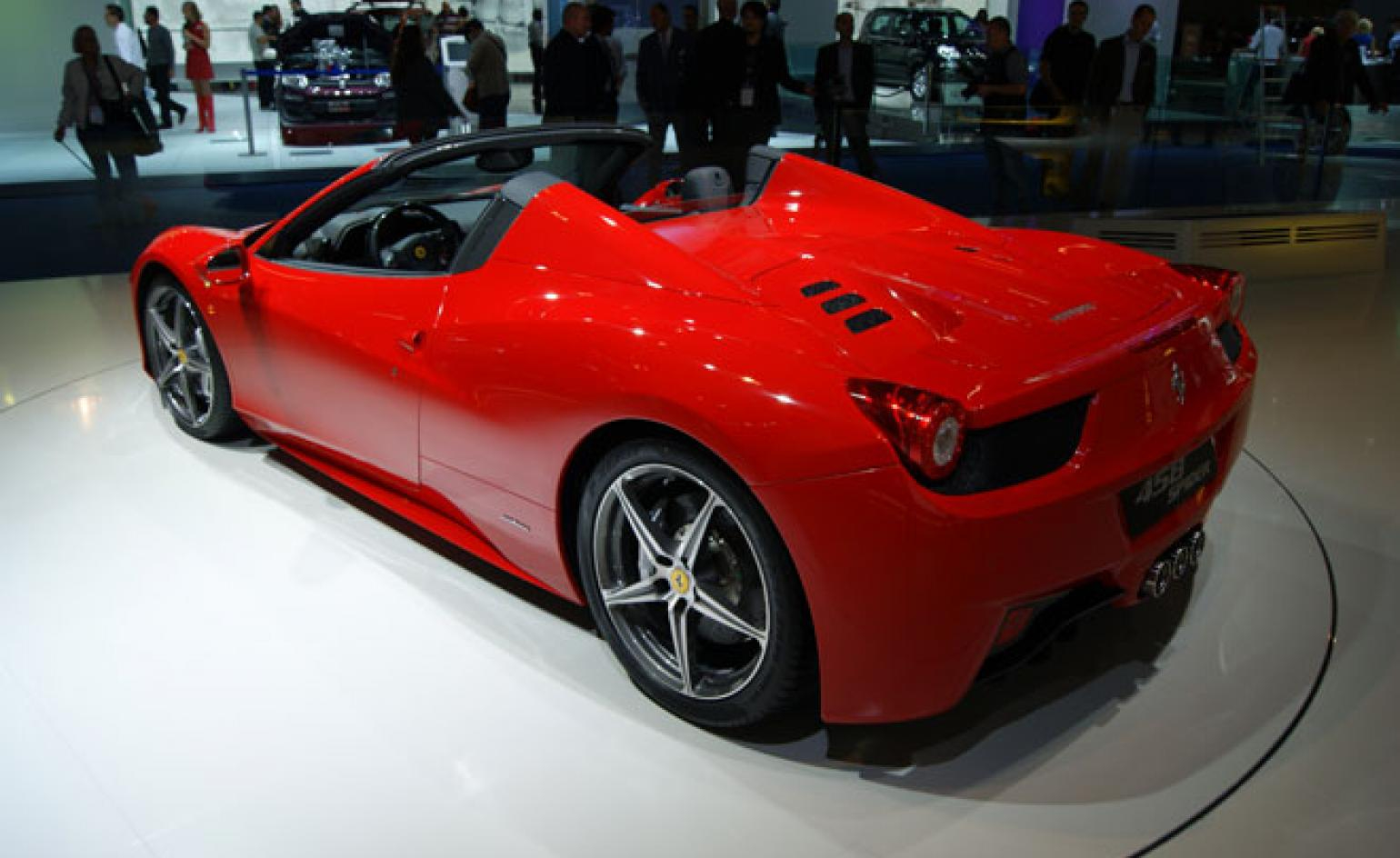
Ferrari 458 Italia Spider
This is the first time Ferrari has fitted a folding metallic roof to a mid-engined two-seater. On the 458 Italia Spider it is made of aluminium to keep the weight down - meaning that it is 25kg lighter than a soft-top and opens in just 14 seconds Price: around £260,000 Delivery: 2012

Fisker Surf
The Surf is the second car to be introduced by independent California-based electric carmaker Fisker Automotive. The shooting break concept is an electric vehicle with extended range, much like its sibling the Karma but with an enlarged boot space. Designer Henrik Fisker says he was inspired by the 1970s Lamborghini Espada

Ford Evos concept
Ford's Evos concept is a design study likely to influence the look of the company's products in the near future. 'What we're conveying with this car is our developing Kinetic design language, that has helped shape our cars, is entering its second generation,' says head of design Martin Smith. 'This means the surfaces are tighter and simpler in execution and the front is the new face of Ford for a more premium look. The laser cut slim lamps show the future technology that will be featured in our cars.' Inside it has a slim instrument panel and is driver focused, incorporating future technologies, mainly Ford's 'cloud connectivity'. Evos also features striking doors, 'to show that we are exploring different door structures,' according to Smith

Honda Civic
Now in its ninth generation, the Civic is a pivotal car in Europe for the Japanese marque. Back in 2006 Honda gave the Civic a European aesthetic that has been the reason for its ongoing success here, so for the new model the designers have maintained the strong wedge shape, lowering the height by 20mm and increasing the width by 10mm. Daisuke Sawai, creative chief designer at Honda in Japan says: 'Honda is growing with the Civic so it is very delicate thing to approach the redesign.' Sawai and his team have maintained the basic values of the Civic - which he says are dynamism and functionality - but adapted them to today's needs. 'The previous model had a very futuristic design like a spaceship as it was meant to shock the customer,' he explains. 'But now times have changed and environmental values are more important. People are becoming more rational. We adapted this into the design to remain dynamic but suggesting how clean this car is through the design.' Sawai has also re-introduced Japanese elements which he describes as 'the harmony between man and machine.'
Price: around £15,000
Delivery: 2012

Honda pavilion
The Honda pavilion design is the work of London-based Wieden + Kennedy in collaboration with Belgian designer Sebastien Wierinck. The playful design follows the theme of 'many roads to zero emissions'. Wierinck has used flexible, polyethylene tubes manipulated to create various environments and seating areas all of which are connected to 'the dream house' - a hub that houses Honda's future vision in terms of technology and sustainability. The stand is divided into sections - hydrogen, electric, hybrid, petrol and diesel - and each technology has been colour coded. 'We wanted to talk about Honda's technology in a simple way and used the tubes to help tell the story,' explains W+K creatives Tom Seymour and David Bruno. 'Each colour had a good reason, for example there are blue tubes in the hydrogen area because the only thing that the FCX Clarity (a hydrogen fuel cell electric vehicle) emits is water. And the multi-coloured dream house combines all the colours as it represents all the technologies coming together to create Honda's vision of zero emissions.'

Jaguar C-X16 concept
Jaguar's latest C-X16 concept car is a two-seater study for a compact sports car. The model shown at Frankfurt has a hybrid engine based on a 3.0-litre V6 engine. 'The world has been waiting for us to do a two-seater small sports car - it really is in our blood and our heritage,' enthuses Julian Thompson, head of advanced design. 'It cements the sporting character of the Jaguar brand and takes us to where we need to be. And it was a chance to do something a little more edgy and sporty for our younger customers. It is very much the car we've been dying to do.' Price: Around £50,000 Production: 2012
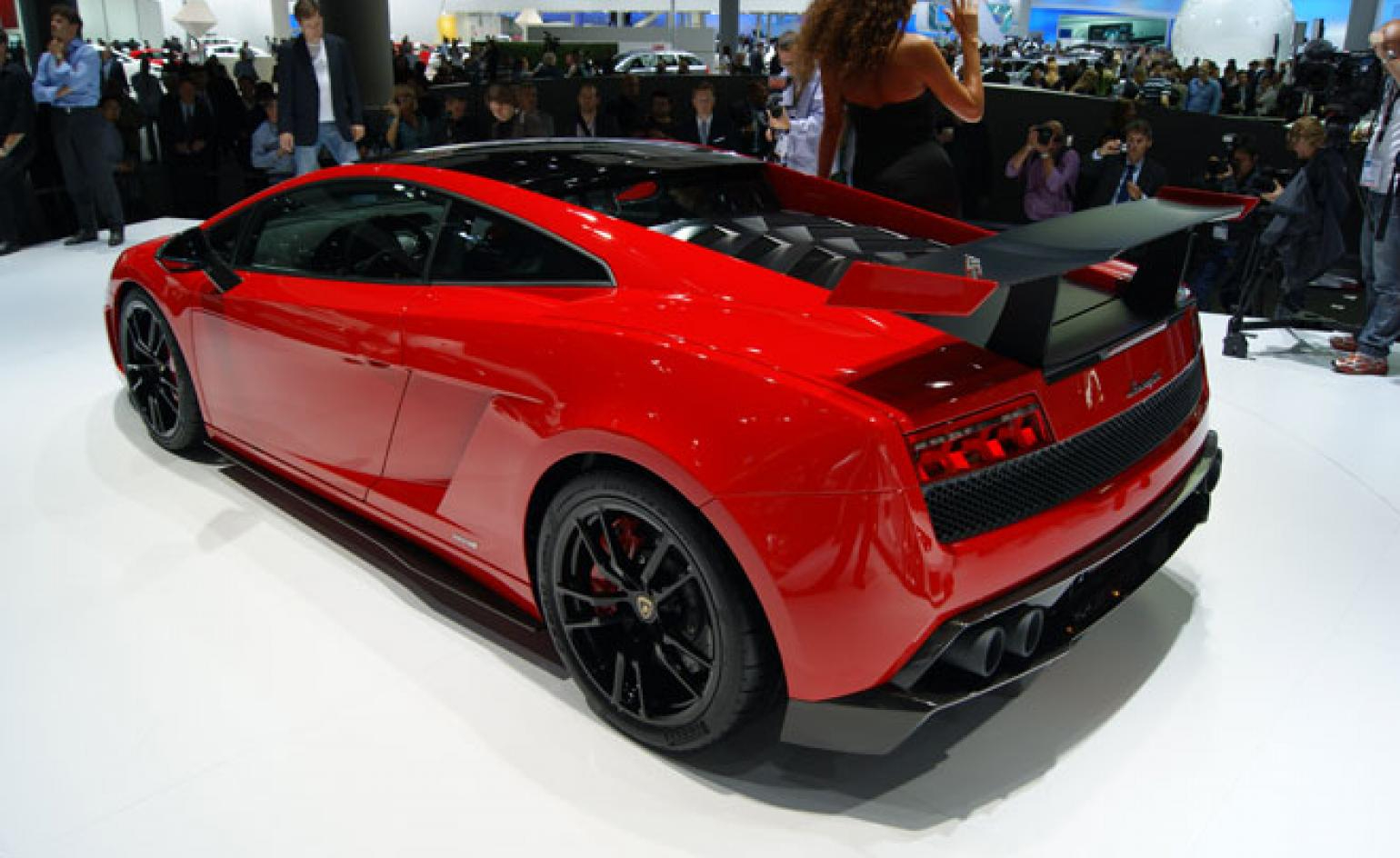
Lamborghini Gallardo LP 570-4 Super Trofeo Stradale
This latest Lamborghini features a manually adjustable carbon fibre rear wing, which promises downforce up to three times that of the normal Gallardo. It weighs 70kg less than the LP 560-4, and speeds to 200 km/h in just 10.4 seconds

Land Rover DC100
With the DC100, Land Rover is attempting to reinvent the Defender for 2015. This isn't an easy task, as the design needs to meet the demands of a diverse customer base - military, farmers and foresters to name a few, as well as dedicated urban off-roaders

Maserati Kubang
First appearing in concept form at the 2003 Detroit Motor Show, the Maserati Kubang sports-utility concept at Frankfurt is closer to the production version

Mercedes-Benz F125 hydrogen concept
The F125 is the latest study in the firm's F research vehicle group. It's a hydrogen-powered coupé concept car with gullwing doors that suggests a path the marque could head down with its executive car styling. The mono-volume structure allows for an airy cabin and grand entrance. 'A new vision of what the next, next, next S Class could look like - but right now it is only a vision of the technology,' says Hubert Lee, creative director at Mercedes-Benz advanced design North America, who led the exterior styling team
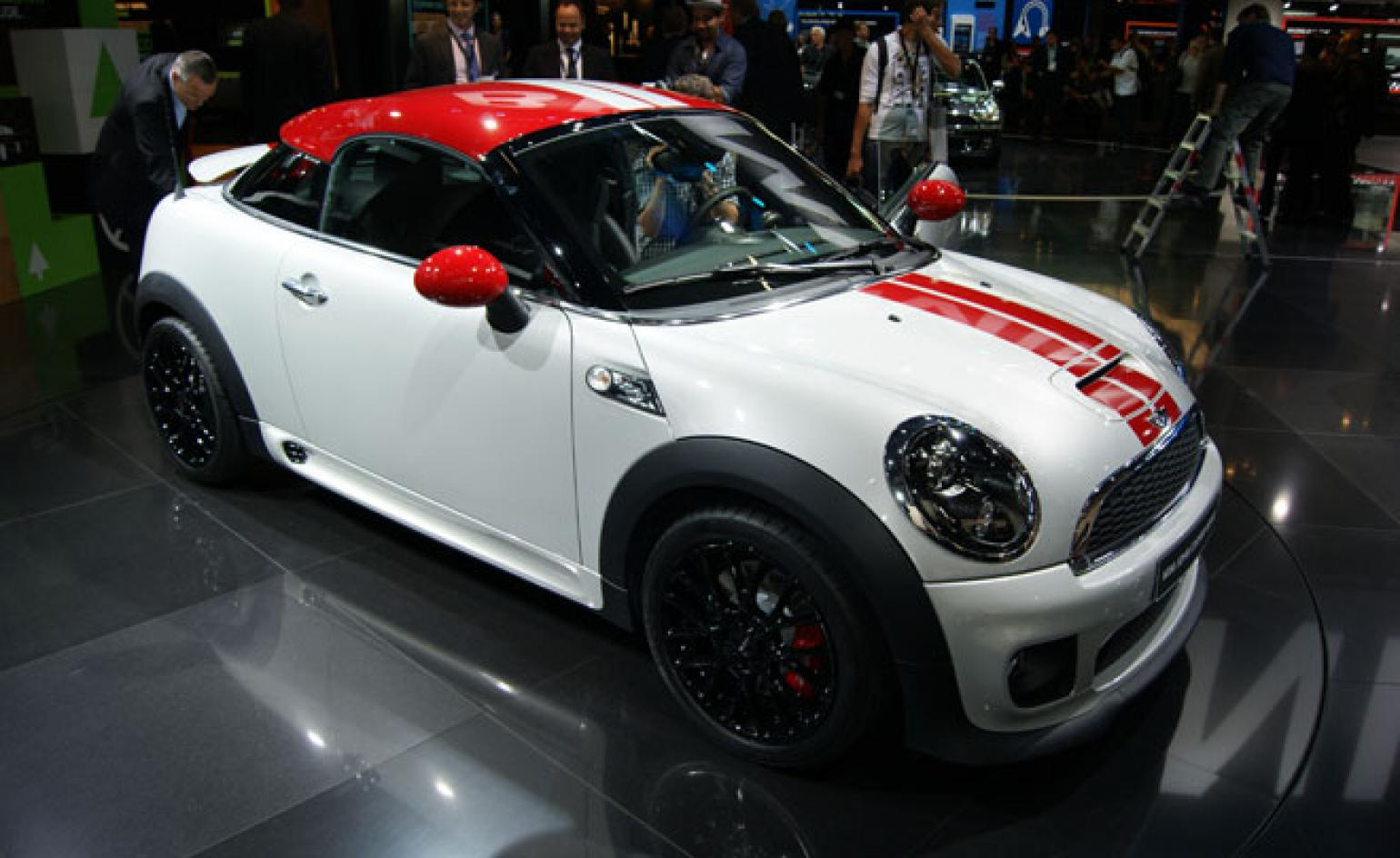
Mini Cooper Coupé S
The Mini Coupé is the latest in the Mini family, which now includes variations on the hatch and convertible, the Clubman and Countryman. This two-seater will be offered with a choice of four engine variants with outputs ranging from the 122 hp to 184 hp on the S model. 'The Mini brand starts from the core of the hatch and we are able to expand left and right of this,' says head of design Anders Warming. 'This is an even smaller Mini than what you see on the roads today. This is very important to us - to show that the brand isn't just one car but a family with a variety of car design statements.' The car has an extended stowage and loading capacity behind the driver and passenger seats and the wide and high opening tailgate makes loading easier. It also features a cute pop-up rear spoiler. The floating roofline is at the heart of the Coupé's design. 'The roof graphic almost emulates a baseball cap turned the other way to have an attitude, personality and status,' says the designer. The roof can be ordered in various shades, as can the exterior and interior trim. 'It is an event ordering a Mini,' the designer says. 'You can apply an entire "yours" programme to this car. Luxury should come in all sizes.'
Price: Circa £16,000
Delivery: October 2011

Porsche 911
Redesigning arguably the world's most iconic sports car can't have been easy. The new 911 retains the core design DNA - the classic proportion and silhouette that includes a low rear end and long rear overhang which cannot be altered. 'As is the case with every 911, we were seeking the right balance between the familiar and the new,' says Matthias Kulla who led the design team. 'We had to make sure not to overdo it, to stay simple and straightforward - to stay Porsche.' The car has been lowered with a longer wheelbase with a wider track at the front. The beltline has been slightly raised which, in conjunction with the lowered roof, results in a much slicker side window. 'It's the rear of a Carrera that is the most special design aspect, and on the new car form and graphics work in perfect harmony,' says Kulla
Price: around £71,449
Delivery: December 2011

Renault Frenzy
Frenzy is the fourth concept to come from Renault under the design leadership of Laurens van der Acker that started with the sexy DeZir, continued with Captur and R-Space. This full-electric concept is described as a commercial business vehicle that can double up as a comfortable car. Together these cars are meant to show the marque's future design direction

Smart Forvision
Smart was way ahead of its time when Swatch's Nicolas Hayek came up with an idea to build tiny two-seater cars that derived more from product than automotive design. With electrification, Smart seems to have found a new lease of life. For the Forvision, the Mercedes-Benz-owned marque has teamed up with chemical company BASF to develop an electric city car which hints at the aesthetic of the next generation of city cars

Volkswagen Nils concept
Following on from the XL1 design study shown last year, Nils is a tiny one-seater concept car with gullwing doors, a vision of a future mode of urban transportation. 'We wanted to create a new transport solution for the urban mobility but to transport the Volkswagen design DNA,' says Klaus Birschoff, director design research and development. 'The design is clean and all shut lines have a function. The rear is reserved for batteries and electric engine.' To reduce the shape and incorporate only one driver was a demanding task. The lower windows are a fun element allowing the driver to see the turning wheels. The wheel design is a balance of aerodynamics and cooling of the brakes. Inside the car has a small dashboard housing all the necessary functions. 'This is an initiative from our research department,' says Birschoff. 'We want to offer something like this, and the Nils is our first glance at it. If we get a good reaction then we will decide what to do next.'
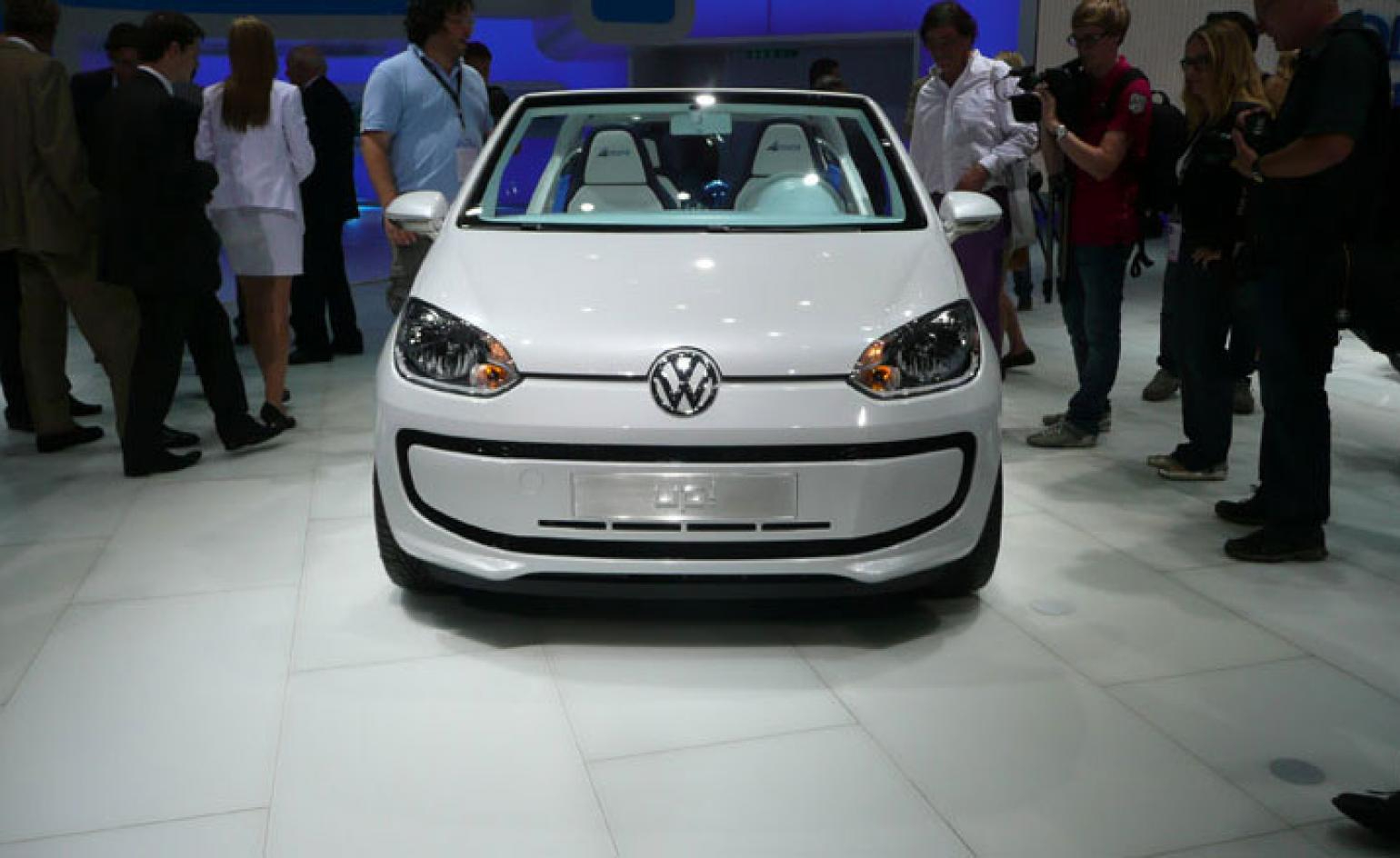
Volkswagen Up
Following on from the original concept shown in 2007, the Up family are small, affordable and global cars that will include all kinds of variants and engine options including an electric e-Up that will come to market in 2013. The Up cars are simple and smart - much like the iPhone design - and intended to be easily understood. 'A simple design like this you can only achieve if you have a simple package and did your homework with the engineers,' says Klaus Birschoff, director VW design research and development. 'If you have the perfect proportions you don't need the added content.' The designer continues: 'The Up is about purity, simplicity and affordability. Simplicity means the face has to be absolutely unique and sympathetic.' At Frankfurt VW displayed the entire Up range, including three and five door variants, the e-Up and a Up Buggy concept as well as a super luxurious model designed by head of VW AG design Walter de'Silva and inspired by the classic yacht tender

Volvo Concept
You Concept You is a follow-up to Concept Universe shown earlier this year at the Shanghai Motor Show. It gives another insight into Volvo's thinking as a Geely-owned company. It features interesting details such as the rubber rear lights that designer Peter Horbury says 'allow us to create a aerodynamic advantage at the rear'. The interior design and in particular the use of wood has a very Scandinavian aesthetic feel

Yo Concept
Owned by billionaire Mikhail Prokhorov Russian carmaker Yo-Auto is a joint venture between truck maker Yarovit and Onexim investment group. The Yo Concept car shown at Frankfurt is a range-extender prototype using a petrol engine to charge the batteries to drive the electric motors
www.yarovit.com
A writer and editor based in London, Nargess contributes to various international publications on all aspects of culture. She is editorial director on Voices, a US publication on wine, and has authored a few lifestyle books, including The Life Negroni.
-
 All-In is the Paris-based label making full-force fashion for main character dressing
All-In is the Paris-based label making full-force fashion for main character dressingPart of our monthly Uprising series, Wallpaper* meets Benjamin Barron and Bror August Vestbø of All-In, the LVMH Prize-nominated label which bases its collections on a riotous cast of characters – real and imagined
By Orla Brennan
-
 Maserati joins forces with Giorgetti for a turbo-charged relationship
Maserati joins forces with Giorgetti for a turbo-charged relationshipAnnouncing their marriage during Milan Design Week, the brands unveiled a collection, a car and a long term commitment
By Hugo Macdonald
-
 Through an innovative new training program, Poltrona Frau aims to safeguard Italian craft
Through an innovative new training program, Poltrona Frau aims to safeguard Italian craftThe heritage furniture manufacturer is training a new generation of leather artisans
By Cristina Kiran Piotti
-
 Electrification takes pole position at Frankfurt Motor Show 2019
Electrification takes pole position at Frankfurt Motor Show 2019By Guy Bird
-
 The top 10 concept cars unveiled at Frankfurt Motor Show 2017
The top 10 concept cars unveiled at Frankfurt Motor Show 2017By Nargess Banks
-
 Frankfurt Motor Show 2015: a wealth of automotive gems despite industry woes
Frankfurt Motor Show 2015: a wealth of automotive gems despite industry woesA sombre mood hung over the biennial Frankfurt show, known traditionally a time for German carmakers to flex their muscles
By Nargess Banks
-
 Frankfurt Motor Show 2013: the highlights
Frankfurt Motor Show 2013: the highlightsBy Nargess Banks
-
 Frankfurt Motor Show 2009
Frankfurt Motor Show 2009By Nargess Banks